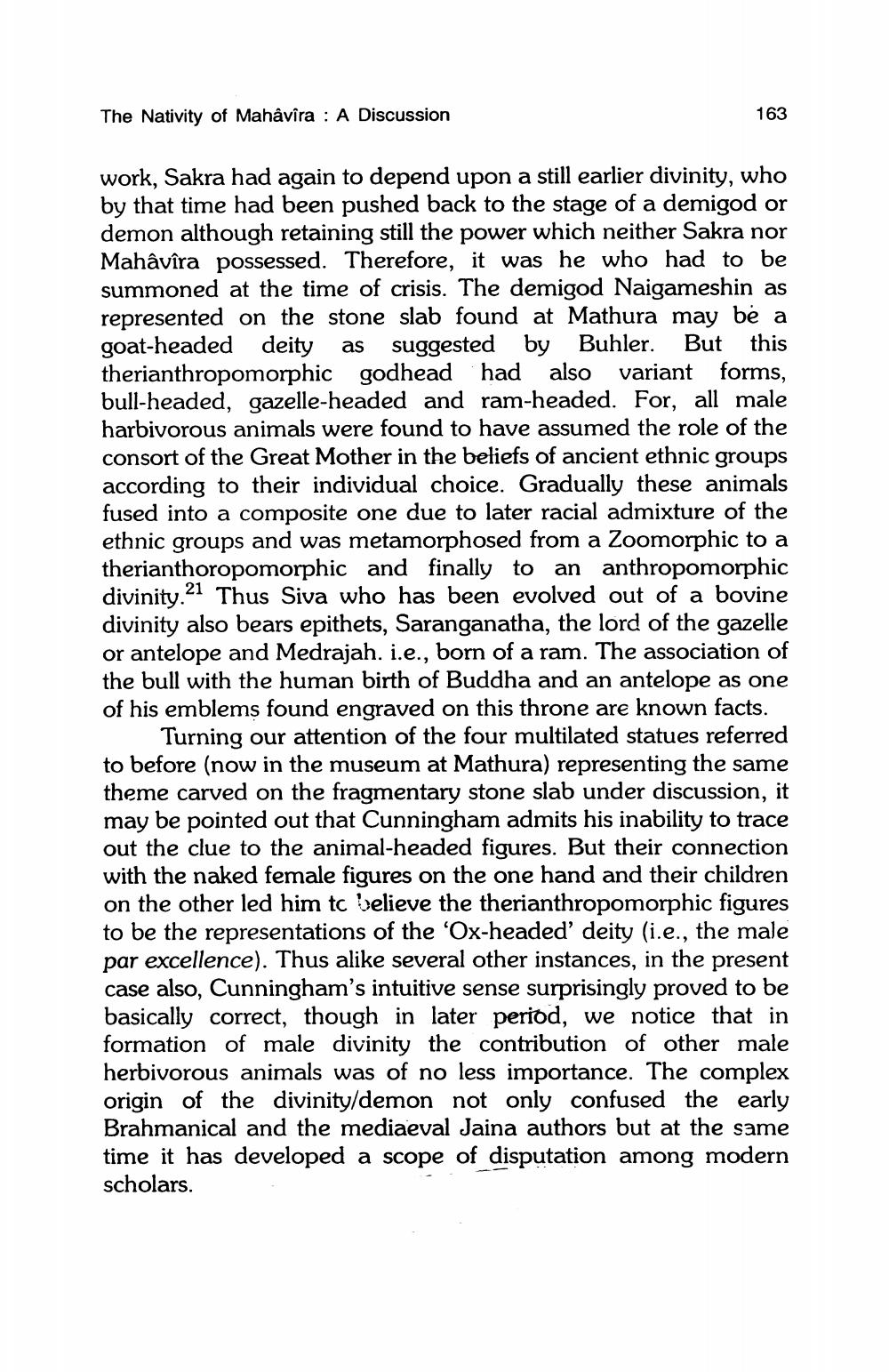________________
The Nativity of Mahâvîra : A Discussion
163
work, Sakra had again to depend upon a still earlier divinity, who by that time had been pushed back to the stage of a demigod or demon although retaining still the power which neither Sakra nor Mahâvîra possessed. Therefore, it was he who had to be summoned at the time of crisis. The demigod Naigameshin as represented on the stone slab found at Mathura may be a goat-headed deity as suggested by Buhler. But this therianthropomorphic godhead had also variant forms, bull-headed, gazelle-headed and ram-headed. For, all male harbivorous animals were found to have assumed the role of the consort of the Great Mother in the beliefs of ancient ethnic groups according to their individual choice. Gradually these animals fused into a composite one due to later racial admixture of the ethnic groups and was metamorphosed from a Zoomorphic to a therianthoropomorphic and finally to an anthropomorphic divinity.21 Thus Siva who has been evolved out of a bovine divinity also bears epithets, Saranganatha, the lord of the gazelle or antelope and Medrajah. i.e., born of a ram. The association of the bull with the human birth of Buddha and an antelope as one of his emblems found engraved on this throne are known facts.
Turning our attention of the four multilated statues referred to before (now in the museum at Mathura) representing the same theme carved on the fragmentary stone slab under discussion, it may be pointed out that Cunningham admits his inability to trace out the clue to the animal-headed figures. But their connection with the naked female figures on the one hand and their children on the other led him to believe the therianthropomorphic figures to be the representations of the 'Ox-headed' deity (i.e., the male par excellence). Thus alike several other instances, in the present case also, Cunningham's intuitive sense surprisingly proved to be basically correct, though in later period, we notice that in formation of male divinity the contribution of other male herbivorous animals was of no less importance. The complex origin of the divinity/demon not only confused the early Brahmanical and the mediaeval Jaina authors but at the same time it has developed a scope of disputation among modern scholars.




